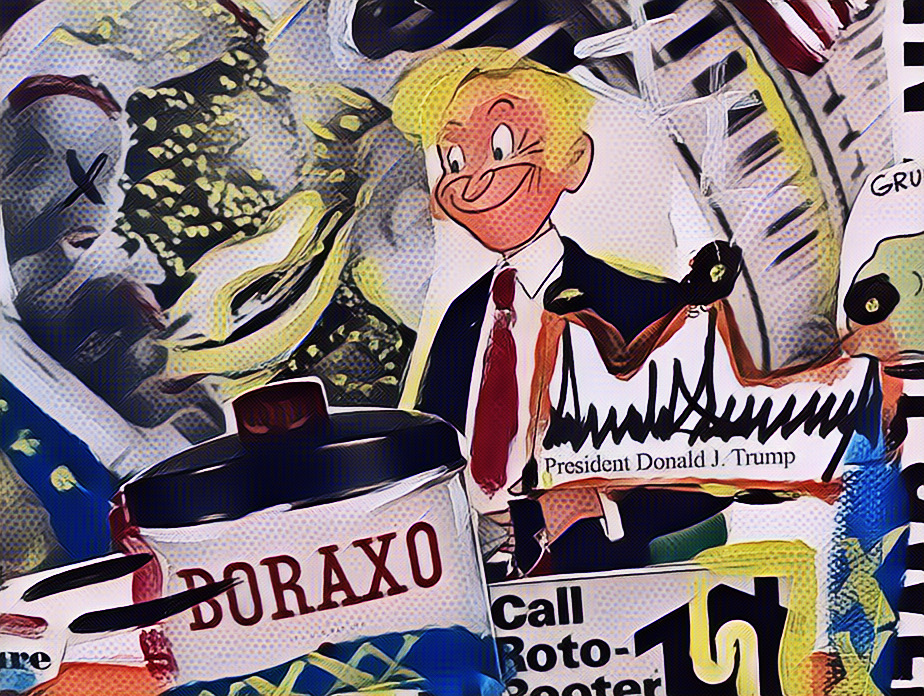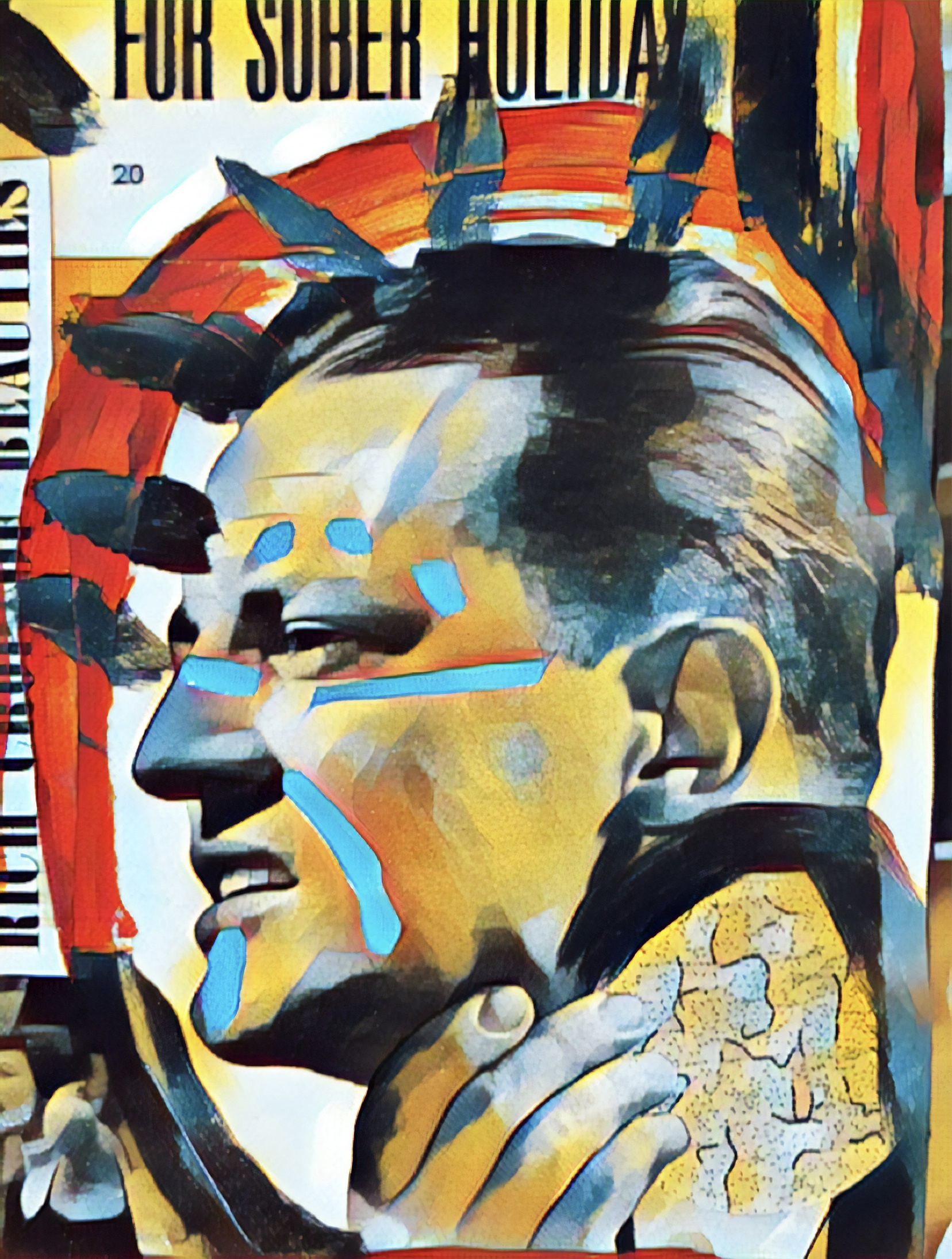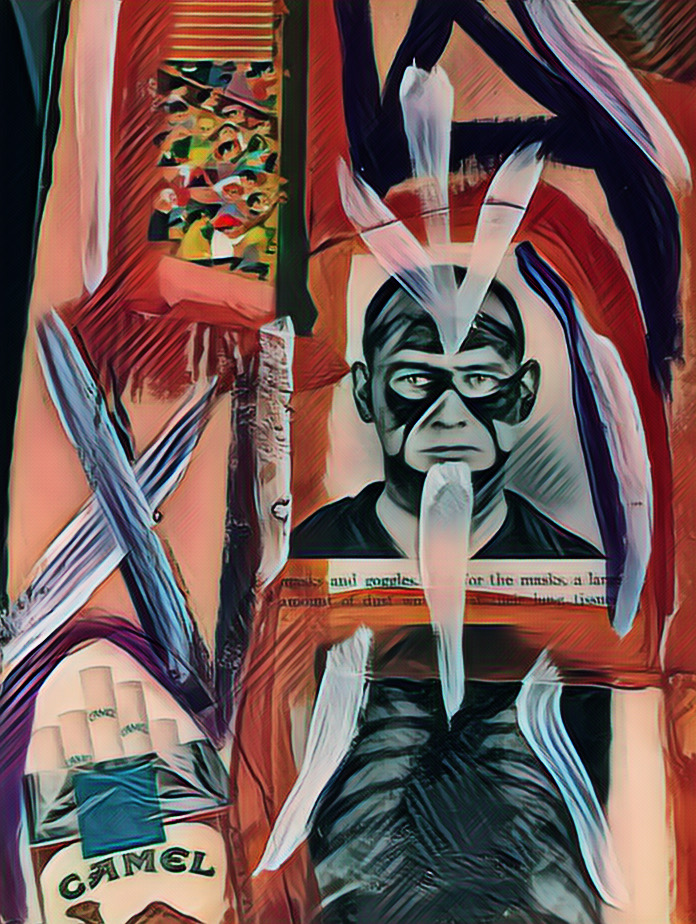Art by Jason R. Montgomery
Artist’s Statement: These pieces, and all my digital work like them, come from a progressive process in which small sections of mixed media collages, some traditional paintings, and some installation pieces, are taken and synthesized into these digital works. I am a Chicano and indigenous Californian so all of my work looks to explore colonialism in some way shape or form. All of my original pieces use found collage and construction materials. In those original pieces I attempt to merge Kumeyaay, Chumash, and Chicano designs and aesthetics to explore the history of US colonization, while synthesizing a decolonized motif that honors the complicated heritage of the postcolonial subject. I take this a step further with the digital pieces like in this collection. I take high rez photos of sections of the original piece, which I digitality alter using a variety of software from the Adobe Creative Suite to MS Paint to create these stand-alone images. The original collage pieces are designed to be chaotic, difficult to process, and at times assaulting, whereas these pieces are intending to be more captivating, digestible, and inviting. What I end up with is pieces that are connected, exist physically, and yet are also imaginary. I hope through this process of creation, hybridization, and synthesis I can explore the cultural synthesis intrinsic to decolonization.
 Jason R. Montgomery, or JRM, is a Chicano/Indigenous Californian writer, painter, and playwright from El Centro, California. In 2016, along with Poet Alexandra Woolner, and illustrator Jen Wagner, JRM founded Attack Bear Press in Easthampton, MA. In 2019, JRM’s art was featured at CreativeArts Workshop in New Haven, CT, and his solo show Aqui Y Alla at the MapSpace Gallery in Easthampton. JRM completed graduate studies at the University of California, Santa Barbara’s Department of Theatre and Dance with an emphasis in Playwriting and Chicano Studies in 2006. JRM’s work for the Coalescence show at Readywipe Gallery in January 2020 explored the cultural synthesis intrinsic to decolonization. Using found collage and construction materials, he merges Kumeyaay, Chumash, and Chicano designs and aesthetics to explore the history of US colonization, while synthesizing a decolonized motif that honors the complicated heritage of the postcolonial subject.
Jason R. Montgomery, or JRM, is a Chicano/Indigenous Californian writer, painter, and playwright from El Centro, California. In 2016, along with Poet Alexandra Woolner, and illustrator Jen Wagner, JRM founded Attack Bear Press in Easthampton, MA. In 2019, JRM’s art was featured at CreativeArts Workshop in New Haven, CT, and his solo show Aqui Y Alla at the MapSpace Gallery in Easthampton. JRM completed graduate studies at the University of California, Santa Barbara’s Department of Theatre and Dance with an emphasis in Playwriting and Chicano Studies in 2006. JRM’s work for the Coalescence show at Readywipe Gallery in January 2020 explored the cultural synthesis intrinsic to decolonization. Using found collage and construction materials, he merges Kumeyaay, Chumash, and Chicano designs and aesthetics to explore the history of US colonization, while synthesizing a decolonized motif that honors the complicated heritage of the postcolonial subject.



